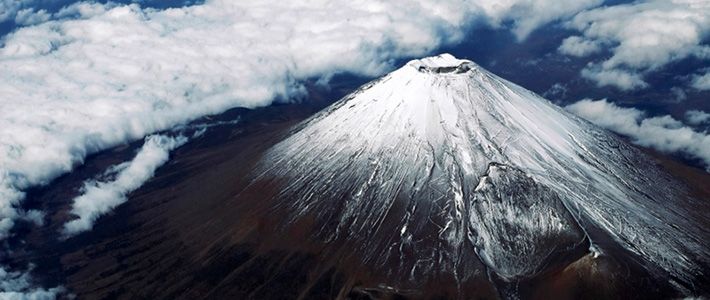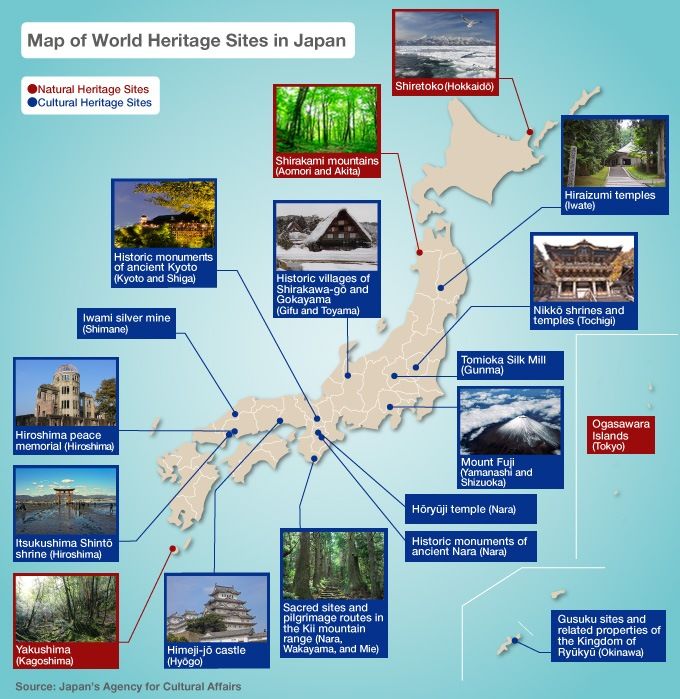
Mount Fuji Is Japan’s Latest World Heritage Site
Culture- English
- 日本語
- 简体字
- 繁體字
- Français
- Español
- العربية
- Русский
Mount Fuji, which straddles Yamanashi and Shizuoka Prefectures, was officially registered as a World Heritage site on June 26, 2013, as announced by the World Heritage committee of UNESCO in the Cambodian capital Phnom Penh.
Since ancient times, Mount Fuji has had great cultural significance in Japan. The majestic mountain has been viewed by the Japanese as a sacred symbol of the nation and has been depicted by such great artists as the painter Hokusai.
Mount Fuji is Japan’s thirteenth World Cultural Heritage. This brings the country’s total number of World Heritage sites to 17, including its four World Natural Heritage sites.

A Cultural (Not “Natural”) Heritage Site
The Convention Concerning the Protection of the World Cultural and Natural Heritage (“the World Heritage Convention”), adopted at the 1972 General Conference of UNESCO, called for a list to be created of natural and cultural sites of “outstanding universal value.”
Initially, Japan sought to have Mount Fuji registered as a World Natural Heritage site, but that effort ran up against a number of problems, including worsening environmental problems such as illegal dumping of garbage in the area and shortcomings in terms of nature conservation. These difficulties led to a shift toward seeking to have the mountain registered as a World Cultural Heritage site instead. The bid—officially known as “Fujisan: Sacred Place and Source of Artistic Inspiration”— included 25 points in the Mount Fuji area, including the summit, sacred historical sites, and Fuji Five Lakes.
In April, the International Council on Monuments and Sites (ICOMOS), an advisory body to UNESCO, issued a report regarding the World Heritage bid of Mount Fuji. The report recommended leaving out the Miho no Matsubara pine forest (located 45 kilometers from the mountain), from the proposed list of site components. In the end, though, the Japanese side managed to convince UNESCO that the cultural value of the forest merited inclusion with the other places. ICOMOS, however, did not recommend the bid to register the “Temples, Shrines, and Other Structures of Ancient Kamakura” (Kanagawa Prefecture) as a World Cultural Heritage site.
Japan’s 17 World Heritage Sites
In December 1993, Japan’s first World Cultural Heritage sites were registered: the Buddhist Monuments in the Hōryūji Temple area (Nara Prefecture) and Himeji-jō Castle (Hyōgo Prefecture). The twelfth such site was registered in 2011, with the recognition of Hiraizumi—Temples, Gardens, and Archaeological Sites (Iwate Prefecture). The country’s first two World Natural Heritage sites were also recognized in December 1993: Yakushima (Kagoshima Prefecture) and Shirakami-Sanchi (Aomori and Akita Prefectures). This was followed by Shiretoko (Hokkaido Prefecture) and the Ogasawara Islands (Tokyo Prefecture), bringing the total number of sites to four.
As of June 2013, there are 981 World Heritage sites in the globe (759 World Cultural sites, 193 World Natural sites, and 29 mixed properties); a total of 190 countries have signed the “World Heritage Convention.”| World Heritage Sites in Japan | Year listed |
|---|---|
| World Cultural Heritage Sites | |
| Buddhist Monuments in the Hōryūji Temple Area (Nara Prefecture) | December 1993 |
| Himeji-jō Castle (Hyōgo Prefecture) | December 1993 |
| Historic Monuments of Ancient Kyoto (Kyoto and Shiga Prefectures) | December 1994 |
| The Historic Villages of Shirakawa-gō and Gokayama (Gifu and Toyama Prefecture) | December 1995 |
| Hiroshima Peace Memorial (Hiroshima Prefecture) | December 1996 |
| Itsukushima Shintō Shrine (Hiroshima Prefecture) | December 1996 |
| The Historic Monuments of Ancient Nara (Nara Prefecture) | December 1998 |
| The Shrines and Temples of Nikkō (Tochigi Prefecture) | December 1999 |
| Gusuku Sites and Related Properties of the Kingdom of Ryūkyū (Okinawa Prefecture) | December 2000 |
| Sacred Sites and Pilgrimage Routes in the Kii Mountain Range (Nara, Wakayama, and Mie Prefectures) | July 2004 |
| Iwami Ginzan Silver Mine (Shimane Prefecture) | June 2007 |
| Hiraizumi—Temples, Gardens, and Archaeological Sites (Iwate Prefecture) | June 2011 |
| Fujisan—Sacred Place and Source of Artistic Inspiration (Yamanashi and Shizuoka Prefectures) | June 2013 |
| Natural World Heritage Sites | |
| Yakushima (Kagoshima Prefecture) | December 1993 |
| Shirakami-Sanchi (Aomori and Akita Prefectures) | December 1993 |
| Shiretoko (Hokkaido Prefecture) | July 2005 |
| Ogasawara Islands (Tokyo Prefecture) | June 2011 |
World Heritage Hiraizumi UNESCO Mount Fuji Kamakura Miho no Matsubara ICOMOS